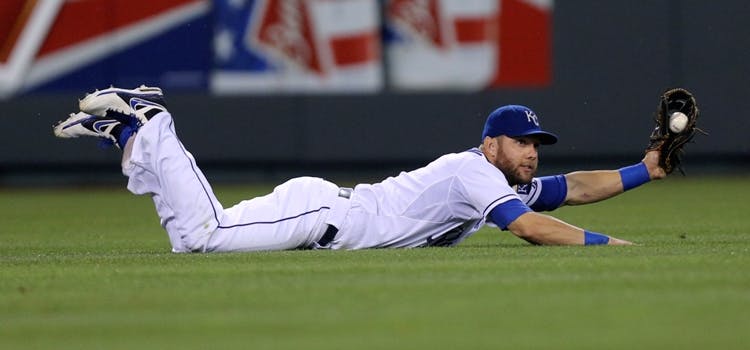Featured courses
- Understanding The Shift by Brandon Ogle
- Two Drills to Improve Outfield Movement and Communication by Grant Young
- The Ultimate Resource For Coaching Youth Baseball by Jackson Chlebowy
- Become a Master at Bunting by Brandon Ogle
- 5 Reasons Why There Is More To Good Base Running Than Just Speed by Brandon Ogle
- Three Injury-Prevention Tips For Your Offseason Pitching Program by Grant Young
- How to Teach Hitting to the Next Generation by Grant Young
- Developing Defensive-Minded Baseball Catchers by Grant Young
- 3 Baserunning Tips to Score More Runs in Baseball by Grant Young
- 5 Outfield Drills to Work on in Season by Alec Burris
- Keys For Scoring More With Runners on First and Third Base by Grant Young
- How to Develop Your Game to Become a Five-Tool Player by Brandon Ogle
- 3 Coaches Share the Keys to Running Baseball Practice the Right Way by Grant Young
- Four Drills to Sharpen a Baseball Hitter’s Vision at the Plate by Grant Young
- Four Quotes to Hit Better With Two-Strikes by Grant Young
- Four of Former MLB Pitcher Juan Nieves’ Movement-Based Pitching Drills by Grant Young
- Two Tips For Developing an Elite Baseball Bullpen by Grant Young
- Overcoming the Four Challenges of Indoor Baseball Practices Because of Weather by Grant Young
- Three Tips to Make Your Baseball Team Mentally Tougher by Grant Young
- Three Priceless Philosophies to Motivate Your Baseball Team by Grant Young
- Three Offseason Baseball Drills to Simulate Competition by Grant Young
- Three Baseball Offseason Strength and Conditioning Essentials by Grant Young
- Important Ways to Improve Your Baseball Team’s Baserunning by Grant Young
- Three Ways to Perfect Hitting Mechanics From an MLB Icon by Grant Young
- Catchers can influence pitchers...for bad or good by Drew Johnson
- Throwing Strikes and Playing Good Defense Equals Wins by Jose Ortiz
- Legendary Indiana Head Baseball Coach Bob Morgan’s Offensive Theory by Grant Young
- Tennessee Head Baseball Coach Tony Vitello on How to Practice Baserunning by Grant Young
- Three Great T-Ball Drills For Youth Baseball Players by Grant Young
- How to Manage a Baseball Pitching Staff by Grant Young
- Three Uncommon Tips to Become a Better Hitter by Grant Young
- How a Baseball Coach Can Develop Strike Throwers by Grant Young
- Drills to Develop Elite Baseball Outfielders by Grant Young
- Baseball Training Exercises to Strengthen Arm and Bat Speed by Grant Young
- How to Use Bunting to Score More Runs by Grant Young
- How To Build An Elite Baseball Infielder by Grant Young
- Three Drills to Improve Your Baseball Team's Infield Play by Grant Young
- Three Keys to Curating a Pitching Staff’s Success by Grant Young
- 3 Techniques to Develop a Baseball Player’s Hitting Approach by Grant Young
- How to Cultivate Confidence Within Your Pitchers by Grant Young
- 5 Every Day Drills To Help You Become A Better Catcher by tyler Linderman
- How to Throw A Curveball by Brandon Ogle
- How to Assemble a Lock-Down Bullpen by Brandon Ogle
- How to Throw a Sinker by Brandon Ogle
- How to be a Smart Baserunner by Brandon Ogle
- Improving a player's slugging average by Phillip Woolgar
- The 8 Fundamentals of Pitching by Drew Johnson
- How to Throw a Deceiving Changeup by Brandon Ogle
- Step Up Your Outfield Defense With These Three Drills by Jose Ortiz
- 8 Baseball Drills Every Player Should Practice by Drew Johnson
- How To Become An Elite Defensive Outfielder by Tyler Linderman
- 5 Tips For Crushing A Curveball by Johnny Grassi
- LEGENDS FOR YOUTH INCLUSION BASEBALL CLINIC by Phil
- Fourteen Ways To Turn A .300 Hitter Into A .210 Hitter by Jay P. Granat, Ph.D.
- How To Become The Ideal Leadoff Man by Brandon Ogle

How To Become An Elite Defensive Outfielder
In baseball, especially youth baseball, the outfield is the position where most coaches place a player they want to hide from the action so as to not cause a weakness for the team. As you progress through your baseball career you will find that becoming an elite defensive outfielder makes you invaluable to your team. Mookie Betts has made many heads turn over the past few years with his excellent play in Right Field, with many GM’s and scouts believing he can secure a contract of over $150M despite having average offensive numbers. Here are some key principles to becoming an elite defensive outfielder.
1. Run On Your ToesToes
Run On Your Toes, Not Your Heels
This is a principle I cannot stress enough. If you are going to become an elite defensive outfielder there are plenty of times when you are going to need to get on your horse and go get a ball deep in the gap. As you run down a ball in the gap your coaches will teach you to always keep an eye on the ball as you track it into your glove. Many times when I was younger I would run a long way to get a fly ball and be right there to catch it only to have it deflect off the side of my glove. The problem was that I was running on my heels.
When you run on your heels, your eyes can’t stay steady and the ball tends to bounce in your vision. If you are landing on your heel right as the ball gets to your glove, the ball will bounce in your vision and increase the potential for a misplay.
Practice running on your toes when you go to get the ball in the gap or anytime you are running in general. This allows you to steadily track the ball into your glove. Players like Mike Trout, Alex Gordon, Mookie Betts and Adam Duvall are great at running on their toes and make it look like they are gliding to the ball.
2. Develop A Feared Arm Arm
Develop A Feared Arm
Every pregame fielding routine for an outfielder ends with the same throw; catch a fly ball and fire it home on a rope to catch a guy trying to tag from 3rd. When the opposing team is in the field, you are watching each outfielder to know which one you can try to take the extra base on and which one you know to hold up and not risk being thrown out.
Developing a feared arm takes more than just arm strength. Flexibility and conditioning play a major role as well. Every day you should be doing shoulder and elbow stretches and exercises so that your arm stays healthy. Long toss is your friend. Spend the extra 10-15 minutes warming up each day and extend your range and be sure that you are completely warmed up before trying to launch a ball from the wall.
Finally, your form is the most important part of developing a feared arm. A fast runner can leave no margin for error when you are trying to throw them out, so your form cannot waste any time. Always bust it to get in a great fielding position below the ball so that you can have your feet and shoulders in the right position. For ground balls, take a route that leads you straight through the ball to your target. It may look fancy to catch every ball with one hand by your ear on the run, but any time you can get in position under the ball it leaves the best chance for throwing the runner out.
Remember, a one hopper on a line that never gets above 10 feet off the ground is a better throw than a lob that gets there in the air.
4. Great Jumps on the BallBall
Great Jumps On The Ball Should Become 2nd Nature
Practice, practice, practice. Reading how a ball will react off the bat is not something you can learn from talking with teammates, coaches or professionals, it is something that can only be perfected by practicing. The best defensive outfielders in the game continuously get great jumps on any ball hit to them.
I wish there was some secret I could share with you here, but the fact of the matter is there isn’t. The only way you are going to get great jumps on the ball is by taking fly balls every chance you get. When other players are hanging out and shagging balls in batting practice, you should be in your position and treating each swing as a real at bat. The more real ‘off the bat’ looks you get will allow for you to more quickly recognize how the ball is going to fly.
4. Play Smart, Stay Focusedused
Become The Smartest Player On The Field
Often you will hear people say the Shortstop is the captain of the defense. Derek Jeter himself went by the nickname ‘The Captain’. However I disagree, especially in regards to the Center Fielder. The outfielders have the best view of the entire field. They have the ability to recognize how a play is going to develop well before anyone else on the field. Take some time and study the game. When you watch a college or professional baseball game pay attention to how their decisions impact each play.
I played outfield for 13 years of my life. I’ve gone 5 straight games without ever having a ball hit to me so I realize that it may be easy to ‘zone out’ when you are in the outfield, but that will become your biggest enemy. Stay involved in the game. Help your infielders realize what is going on behind them or beside them outside of their peripheral vision. If you see a runner taking an extra base, let the cutoff man know. If you see a guy taking off from first base on a steal, yell and let the catcher know.
If you are always involved in the play and aware of what your responsibility is if the ball is hit to you, then I can guarantee you that you will see less and less mental mistakes which will lead yourself into a leadership role on the team.



